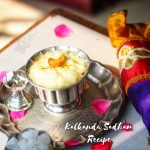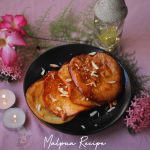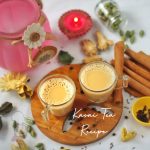The recipe for malaadu is a timeless treasure, weaving together the aromatic essence of roasted gram with the comforting sweetness of jaggery, creating laddus that are not just a treat for the taste buds, but a celebration of tradition and culinary artistry. With each bite, its perfectly balanced flavors and irresistible texture enchant the senses, leaving a lasting impression of indulgence and joy.
Jump Into:
1. Maalaadu Recipe
2. The Origin And History Of maladu
3. A Brief Note On Maaladu As A Sweet Delicacy
4. Needed Ingredients To Make Classic Maaladu
5. Step wise Directions To Make Delicious Maaladu
6. Things To remember
7. Difference Between Sugar Based Maaladu And Rock Candy Based Maaladu
8. Other Nutritious Versions Of Maaladu
9. Faqs
10. Maaladu In A Nutshell
11. Nutritional Value
12. Suitable Beverages For Maaladu
13. Common Savories Served In General With Maaladu
14. A Day From Our Ancestor's home On A Festive Day Relishing this ancient recipe Maaladu

Needed Ingredients To Make Classic Maaladu:
Step wise Directions To Make Delicious Maaladu:
Heat a saucepan and strew in the roasted gram and fry until aromatic. Turn off the flame and when it cools down drop it into a blender and make a fine powder and keep aside.
Drop the rock sugar in a mortar and pestle and pound them coarsely. Then shift it to a blender to make a fine powder. Add both the powders to a bowl and tip in a teaspoon of cardamom powder.
Heat the saucepan again and tip in a little ghee and strew some cashews and roast until golden. Add the melted ghee along with the roasted nuts in to the bowl. Mix everything thoroughly by adding the hot ghee little by little. Take a tiny portion and make a lemon sized ball out of it. Press it firmly with your palms until it holds shape. Similarly, make other balls and keep aside for a while.
Finally arrange it in a serving plate along with a savory and serve it with a sizzling cup of aromatic filter coffee.
Things To remember:
When making malaadu, it's essential to pay attention to several key factors to ensure a successful outcome:
Roasting consistency: Roast the gram (chana dal) evenly until it turns golden brown, ensuring it's not under cooked or burnt, as this affects the flavor and texture of the malaadu.
Grinding texture: Grind the roasted gram into a coarse powder, being careful not to over-grind it into a fine texture, as the coarse texture adds to the overall taste and mouthfeel of the malaadu.
Proper mixing: Thoroughly mix the roasted gram powder with the powdered rock candy, ensuring all the ingredients are well combined. This helps in achieving a uniform distribution of sweetness and flavors throughout the malaadu.
Ghee quantity: Use the right amount of ghee to bind the ingredients together without making the malaadu too greasy. Adding too much ghee can affect the texture and make the laddus too soft.
Shaping consistency: While shaping the malaadu into laddus, ensure the mixture is warm enough to hold its shape but not too hot to handle. Press firmly to form compact laddus that hold together well.
Cooling time: Allow the malaadu to cool completely at room temperature before storing or serving to ensure they set properly and retain their shape.
Difference Between Sugar Based Maaladu And Rock Candy Based Maaladu:
Ingredients
Directions
Heat a saucepan and strew in the roasted gram and fry until aromatic. Turn off the flame and when it cools down drop it into a blender and make a fine powder and keep aside.
Drop the rock sugar in a mortar and pestle and pound them coarsely. Then shift it to a blender to make a fine powder. Add both the powders to a bowl and tip in a teaspoon of cardamom powder.
Heat the saucepan again and tip in a little ghee and strew some cashews and roast until golden. Add the melted ghee along with the roasted nuts in to the bowl. Mix everything thoroughly by adding the hot ghee little by little. Take a tiny portion and make a lemon sized ball out of it. Press it firmly with your palms until it holds shape. Similarly, make other balls and keep aside for a while.
Finally arrange it in a serving plate along with a savory and serve it with a sizzling cup of aromatic filter coffee.








